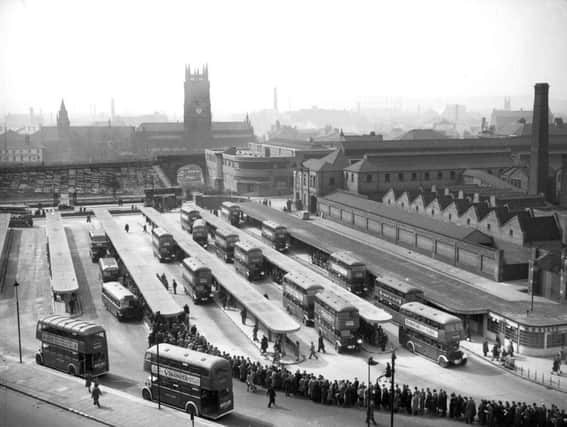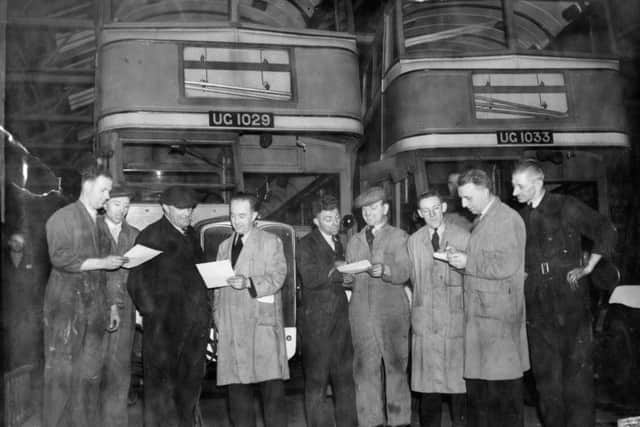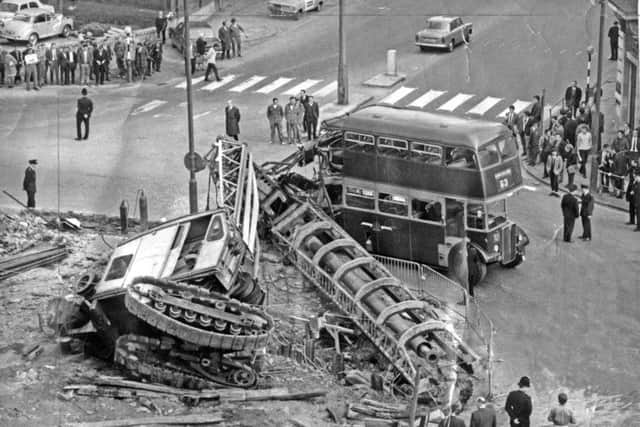Nostalgia on Tuesday: On the buses


This removed a number of restrictions as technology improved. A maximum speed of 14mph was sanctioned, though later reduced, for a period, to 12mph.
During the early 20th century in Leeds, , two horse-drawn buses acted as feeder services to tram routes. From 8 May 1903 one of these was used for passengers wanting to travel from Headingly tram terminus to the golf course at Moor Grange Farm, Spen Lane. A small single deck vehicle was used that could seat 10.
Advertisement
Hide AdAdvertisement
Hide AdThis proved to be inadequate and so the Golf Club asked the Leeds Tramways Committee for something more suitable.


Fortuitously, the Tramways Committee included two golf club members, Councillor R.A. Smithson (Chairman of the Tramways Committee) and J.B. Hamilton (the Tramways General Manager).
The committee proposed replacing the horse bus with a motor bus; the Golf Club agreeing to contribute.
At the same time, the Golf Club planned to move to a larger location opposite Adel church. Leeds’s first motorbus ran on December 16 1905, from Headingley tram terminus to the Spen Lane golf course; the complete run was to Lawnswood Cemetery along Otley Road. When the new golf course was opened, near Adel church on January 6, 1906, a motorbus ran from Headingley tram terminus to the Golf Club via Otley Road and a little later via Weetwood Lane. It might be argued golf was instrumental in bringing motorbuses to Leeds.
Advertisement
Hide AdAdvertisement
Hide AdAfter inspecting motorbuses in London, Birmingham and Burton-on-Trent councillors eventually decided to buy two motorbus chassis from the Ryknield Engine company of Burton-on-Trent, costing £575 each. It was envisaged that the Leeds Tramways department would construct the bodies.


Motorbuses were only seen as useful for feeding electric tram services from a town or city’s sparsely populated outlying areas. They were not considered a serious threat to electric trams.
The Yorkshire Post of December 18 1906 gave details of the Leeds municipal motorbus’s first run: ‘Every day in the week two trips will be made, leaving Headingley at 2.45pm and 3.45pm, and returning from Lawnswood at 3 and 4 o’clock. The new bus, [light yellow or primrose coloured], accommodates 38 passengers and is capable of travelling at a speed of 14 or 15 miles per hour, though the rate of twelve miles per hour – the Board of Trade limit – will not be exceeded. The fare for the single journey is two pence’.
Later in the month, The Yorkshire Post reported the motorbus service was not a complete success as the two vehicles were subject to frequent breakdowns. This, as may be imagined, caused inconvenience to people attending and returning from funerals at Lawnswood cemetery.
Advertisement
Hide AdAdvertisement
Hide AdWhen motorbuses were operating to the Golf Club at Adel there were claims golfers were commandeering all the seats at certain times of the day as well as taking time to board. From Easter Monday, April 16, 1906 a motorbus was used on a feeder service from Lower Wortley tram terminus to Farnley with later variations.


Besides being unreliable, the ride on these early motorbuses was very uncomfortable, as one passenger stated: ‘[The] vibration is so unpleasant that any normal person who is not already fatigued would prefer to walk’.
Buying more motorbuses would not be done without careful consideration said one councillor to the press in May 1907. The situation with the motorbus service on the Farnley route was so bad that it was replaced by the horse bus once used on the Headingley to Spen Lane run.
Leeds Tramways general manager Hamilton was not an ardent fan of the motorbus, claiming at one Municipal Tramways Association meeting that the motorbus had seven times the number of fatal accidents per vehicle per annum, and twice as many injuries.
Advertisement
Hide AdAdvertisement
Hide AdSeveral more motorbuses were acquired up to the First World War but, as elsewhere in the country, restrictions on petrol forced gas bags to be brought into use By 1922 the Leeds fleet only numbered four vehicles. Nonetheless, it was accepted motorbuses provided a useful feeder service to trams and following further advances in petrol engine developments a further six were acquired in 1923. Guy Motors supplied the chassis and the Kirkstall Road works erected the bodies. The six 16-seat (one man operated vehicles were popular and a success, leading to further vehicles to be introduced on new routes.


During late 1924, Leeds Corporation made an application to Parliament to run buses to a large number of outlying towns and villages and this was successful. Amongst the areas included were Addingham, Harrogate, York, Castleford and Dewsbury.
Predictably, more motorbuses with advanced specifications, seating and passengers comforts were acquiredn the years up to the Second World War.
In January 1927, the Donisthorpe Street bus garage in Hunslet was established and subsequently extended. A new bus station was opened in Eastgate/St Peters Street during August 1938 and was rebuilt in 1963 and 1998.
Advertisement
Hide AdAdvertisement
Hide AdTrams finally ceased running on November 7, 1959. Leeds motorbuses, with features unimaginable in 1906, now dominate the city roads.
Thanks to Leeds Library for help with this piece.
Further reading: J. Soper Leeds Transport Volume 2 1902-1931.